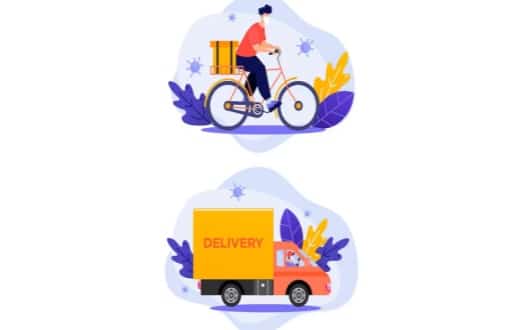During the pandemic, delivery riders were on the front lines, but little was known about their health and safety. Most of the riders who only sometimes followed health and safety rules were men, older, less educated, and not vaccinated. Also, they had an inferior financial situation and lost more money because of the pandemic. To make up for their lost money, they worked more hours and felt more pressure at work. Many drivers speeded and did other dangerous things on the road because their jobs were stressful, they had to work long hours, and they struggled financially.
On the other hand, laboratory & medicine services riders were more likely to take steps to protect their health when their companies and coworkers were more supportive. Fear of Covid-19 also helped things along. During the pandemic, people had new health problems because of their jobs, finances, and fear of getting the virus. Again, help from the company and coworkers made it less likely that new health problems would come up. Some riders also took their health very seriously during this time as they had a whole family to feel at home but were still in danger.
Healthcare Workers Had Seven Times the Risk of Severe COVID-19.
People in non-medical delivery jobs were seven times less likely to get a severe COVID-19 infection than those in medical delivery jobs. Few studies have examined how different groups of workers are more or less likely to get a severe COVID-19 illness. People who work in healthcare are known to be at a higher risk, but it’s unclear what the chances are for people who work in other fields. Except for transport workers, whose higher risk of severe COVID-19 infection was linked to their socioeconomic status, the results stayed the same even after considering things like lifestyle, existing health problems, and work patterns that could affect risk. Medical courier service Arizona provided their riders vaccination and other commodities to compensate for the risk they were willing to take for delivering medical supplies to those in need.
Fears at the Front
While the new teleworkers and their bosses got used to their unique situation of working remotely, many people worldwide had to go to a physical place of work. People know a lot about how hard it is to work in health care, but people in many other fields also had to travel to work, sometimes on crowded trains and buses, and often had to interact with other people, which was very bad for their health.
In the United States, these worries led workers at Amazon’s grocery store chain, Whole Foods, to act together. On March 31, 2020, workers called in sick because they saw their coworkers test positive for COVID-19. They also asked for sick leave, free coronavirus testing, and hazard pay. In April, some of the biggest companies in the United States, like Walmart, Target, and FedEx, stopped working. Arizona medical courier service were nothing but helpless at that time as medical supplies were the most crucial needs for people at that time.
Overall,
Even though the digital platform companies put COVID-19 risk-reduction measures for drivers, such as customer health statements, contactless delivery, and masks and hand sanitizers, drivers and managers said that these measures could have been more effective and challenging to put into place. Given that the virus spreads through the air and that masks are required for public health, customers without masks also put drivers at risk, but many drivers didn’t want to turn them away or argue with them because they could lose tips or get a bad review from the customer. The drivers also had to worry about platform pressures that were related to time. Because they had to hurry to get packages and groceries delivered on time, they broke public health rules that said they should keep a 2-meter physical distance. We should take a moment to thank those riders who became our necessities at the time of Covid.











